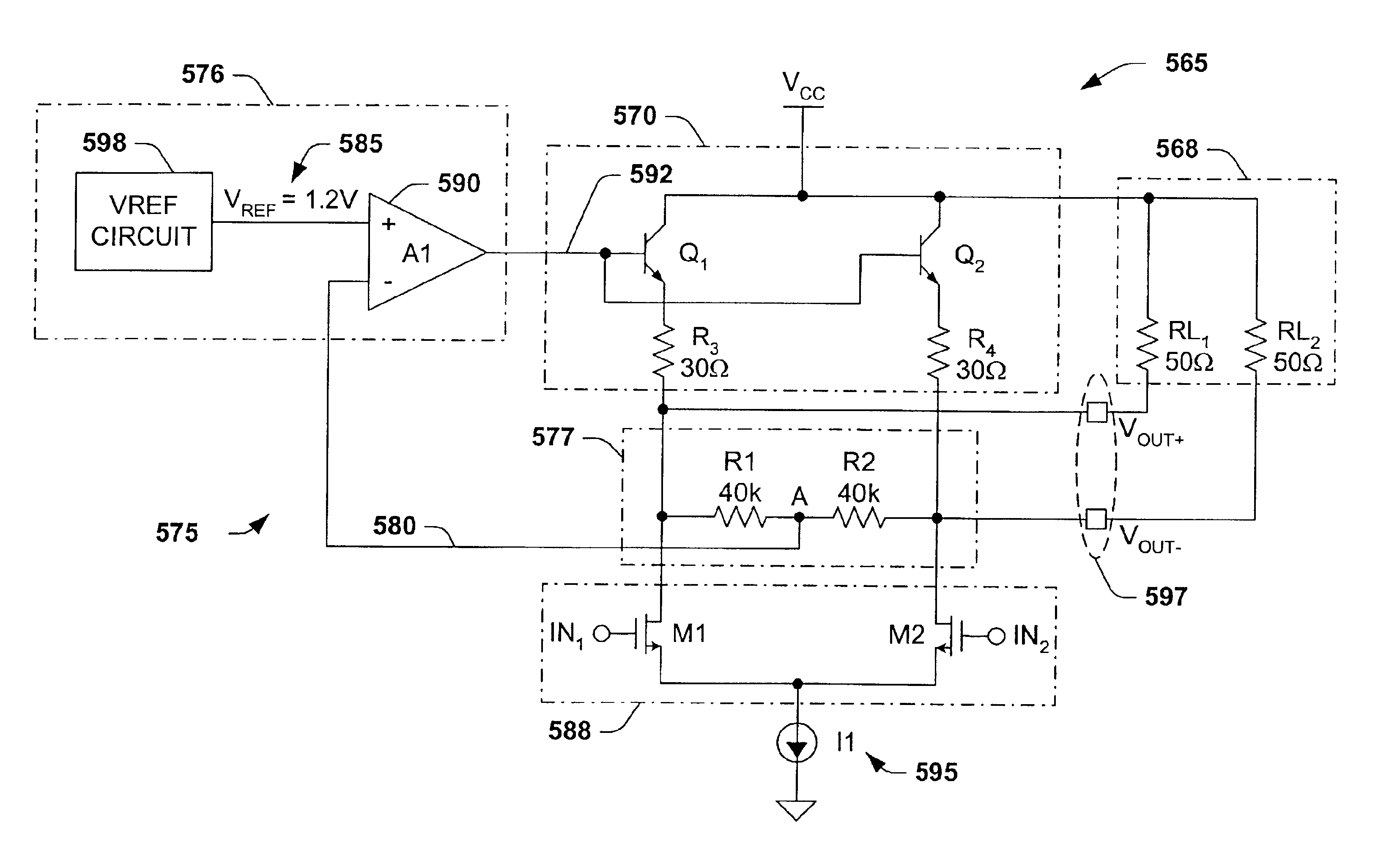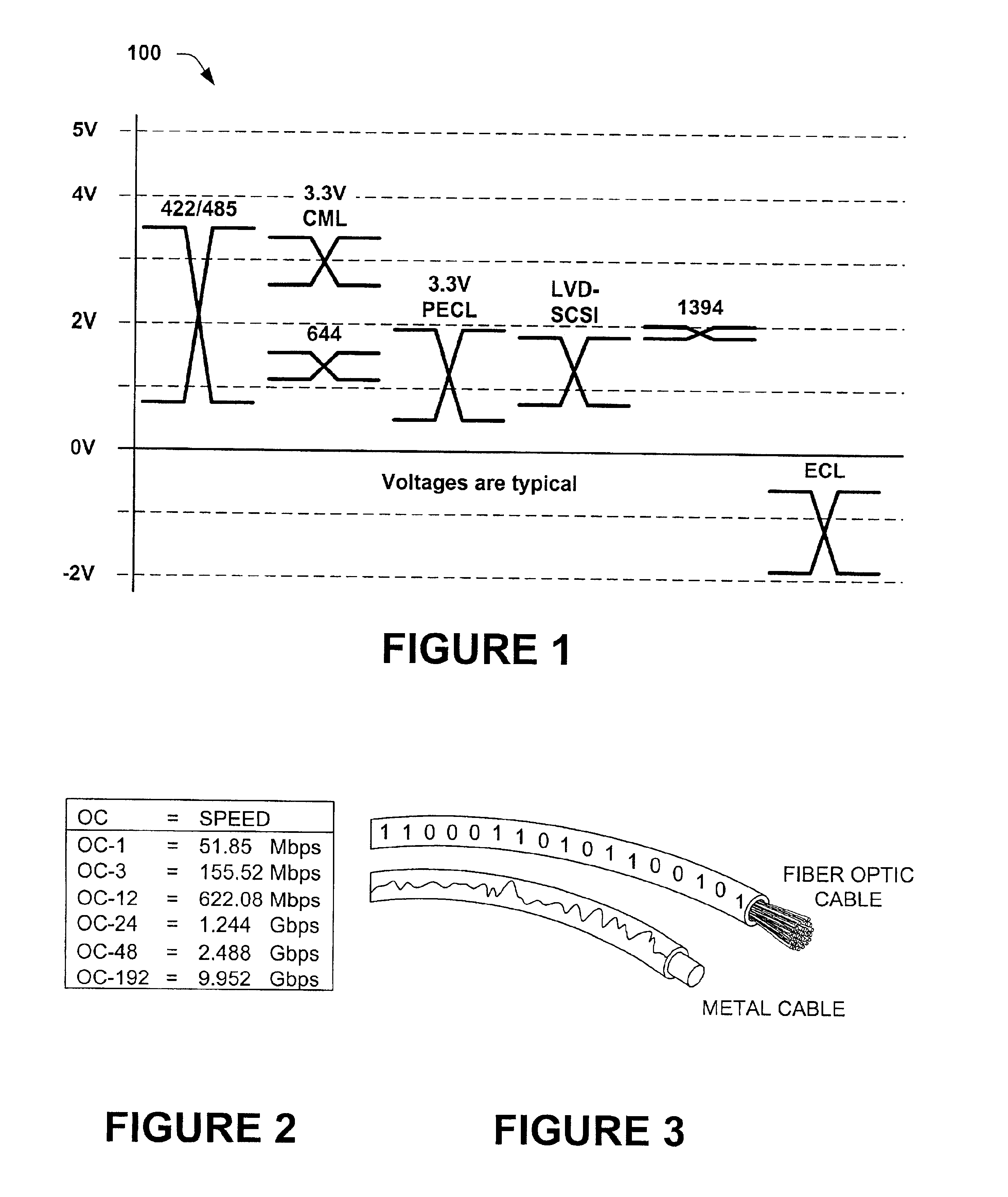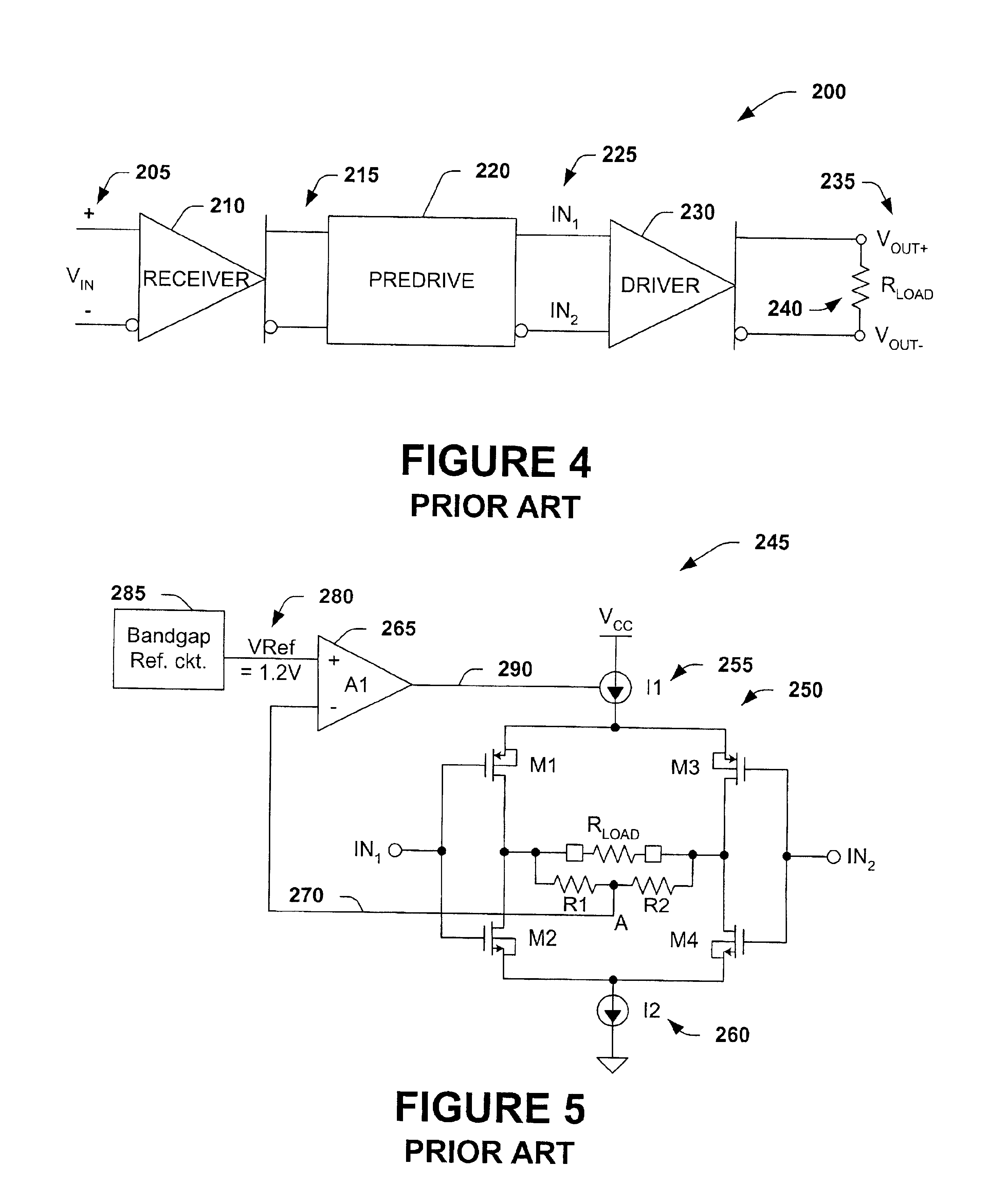Interchangeable CML/LVDS data transmission circuit
a data transmission circuit and cml technology, applied in logic circuit coupling/interface arrangement, pulse technique, baseband system details, etc., can solve the problems of many dc biasing problems, large noise cancellation, and high jitter requirements for transmission of such fast signals, so as to improve the speed of switching transistors and speed up the operation. the effect of the predrive stage and the ability to swing more quickly
- Summary
- Abstract
- Description
- Claims
- Application Information
AI Technical Summary
Benefits of technology
Problems solved by technology
Method used
Image
Examples
Embodiment Construction
The present invention will now be described with reference to the drawings, wherein like reference numerals are used to refer to like elements throughout. The present invention relates to a high speed driver circuit used in the field of telecommunications, and for data communications transmission in LVDS transceiver device applications (e.g., LVDS repeaters and PECL / ECL to LVDS converters), and CML transceiver device applications (e.g., on PCB transmitters and receivers). The transceivers are intended to receive a low voltage differential input signal and interchangeably drive a standard LVDS load with a TIA / EIA-644 compliant LVDS signal, or a standard CML load with a standard CML compatible signal. The driver circuit operates at speeds up to 1.36 Gbps, making it compatible with the OC-24 signaling rate for optical transmission.
The high speed driver circuit employs the use of a mixed voltage mode and a current mode drive section in the output circuit when coupled to LVDS loads, and ...
PUM
 Login to View More
Login to View More Abstract
Description
Claims
Application Information
 Login to View More
Login to View More - R&D
- Intellectual Property
- Life Sciences
- Materials
- Tech Scout
- Unparalleled Data Quality
- Higher Quality Content
- 60% Fewer Hallucinations
Browse by: Latest US Patents, China's latest patents, Technical Efficacy Thesaurus, Application Domain, Technology Topic, Popular Technical Reports.
© 2025 PatSnap. All rights reserved.Legal|Privacy policy|Modern Slavery Act Transparency Statement|Sitemap|About US| Contact US: help@patsnap.com



